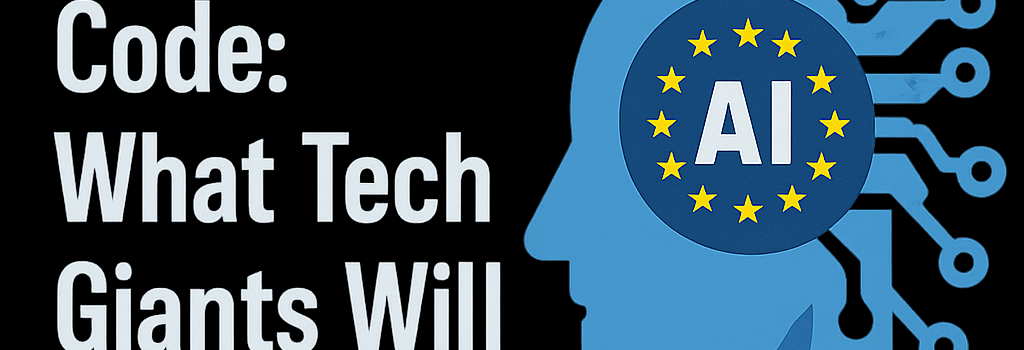EU’s AI Transparency Code: What Tech Giants Will Dislike

The European Commission has published a voluntary code of practice under the landmark EU AI Act that will require unprecedented transparency from general purpose AI providers. This code will initially apply to the largest AI model makers from August 2 with formal enforcement scheduled for August 2026.
Key Provisions and Timeline
The code spans three broad areas including copyright protections, data and model transparency, and public safety monitoring. Companies adhering to the code can expect reduced administrative burdens and greater legal clarity. Those rejecting it will face more onerous compliance routes that may entail costly audits and detailed proof of adherence to the AI Act.
Copyright and Training Data Governance
One of the most contentious points is the prohibition on pirating copyrighted works for training data. AI firms must designate dedicated rights compliance officers, implement complaint mechanisms, and honor opt-out requests within strict time windows. This directly targets practices such as unauthorized ebook scraping and torrent-based datasets.
- Data provenance tracking through secure metadata registries
- Standardized schema for dataset categories including public domain, licensed, third-party, user-generated, and synthetic
- Integration with rights holder APIs for real-time content opt outs
Model Transparency and Design Disclosure
Providers will need to publish detailed model cards explaining architecture choices, training epochs, hyperparameter settings, and compute budgets. Disclosures must specify the proportion of training tokens from different corpus types. This aims to illuminate the balance between public domain versus proprietary datasets as well as user-contributed data.
Model cards should enable independent auditors to recreate performance benchmarks and verify compliance with quality and safety standards Expert from European Data Protection Supervisor
Advanced Safety and Incident Reporting
The code introduces rigorous safety monitoring frameworks. Organizations must detect and report serious incidents within five days of discovery. Serious incidents encompass cybersecurity breaches, infrastructure disruptions, major health harms, and any AI-related fatalities.
- Continuous log aggregation into Security Information and Event Management systems
- Implementation of anomaly detection algorithms across inference pipelines
- Proactive jailbreak testing using automated red teaming
- Periodic penetration tests and third-party safety audits
Energy Consumption and Environmental Impact
Transparency extends to total energy usage covering both training and inference phases. Providers must measure and report kWh per training run as well as per million inference tokens served. This aligns with Green AI initiatives and supports the Commission in tracking the carbon footprint of large-scale AI deployments.
Deep Technical Analysis of Data Lineage
Accurately tracing data lineage requires immutable logging solutions such as distributed ledger technologies or cryptographic hash chaining. Each data batch ingested into training pipelines should be assigned unique identifiers to certify origin and usage rights. Organizations can leverage open source tools like DataLad or MLflow for dataset versioning and governance.
Global Regulatory Implications
The EU’s code sets a precedent likely to influence regulations in the US and Asia. California and the Federal Trade Commission have signaled interest in similar transparency mandates while China has introduced draft rules on algorithmic governance. Multinational AI providers will need harmonized compliance mechanisms to satisfy divergent global requirements.
Industry Challenges and Expert Opinions
Implementing these rules poses significant technical and operational challenges. Key executions include developing scalable metadata tagging systems and integrating real-time rights management workflows. According to AI ethics researcher Dr Mona Sloane, the code could accelerate adoption of privacy-preserving techniques yet also strain smaller AI startups lacking large legal teams.
Enforcement actions under the AI Act may include model withdrawal, market bans, and fines up to seven percent of global annual turnover. As the code awaits final sign-off from Member States, its voluntary nature belies the pressure for industry-wide adoption ahead of mandatory compliance in 2026.
As the deadline approaches, AI providers worldwide are racing to build the compliance infrastructure needed to meet the EU’s stringent transparency and safety obligations while maintaining innovation velocity.